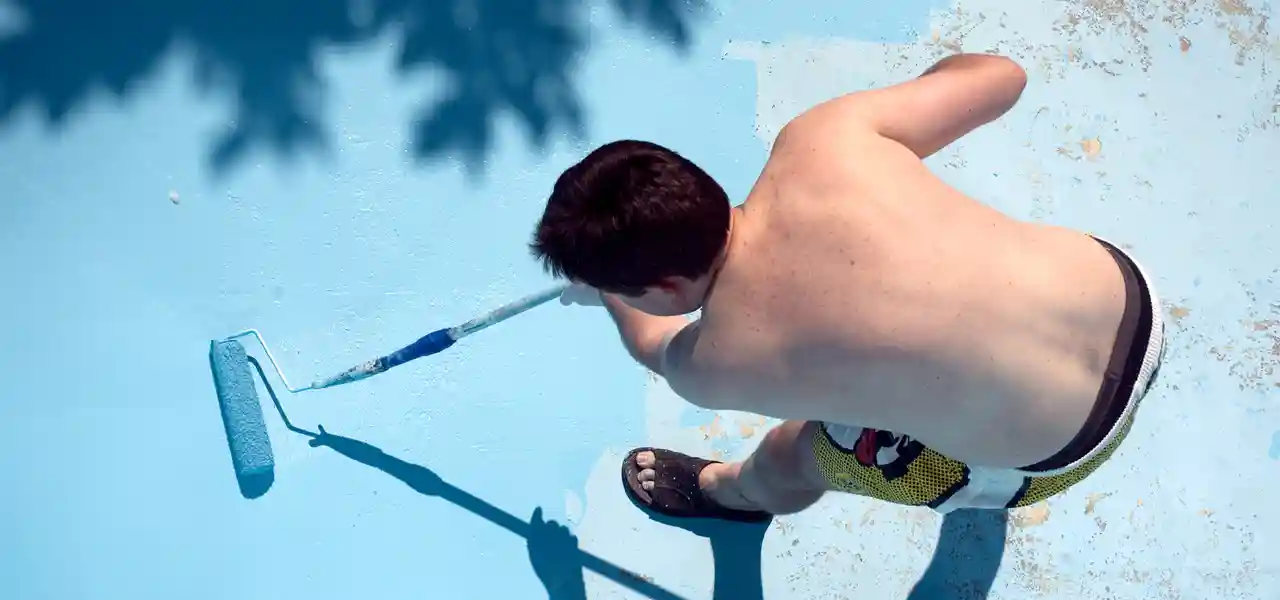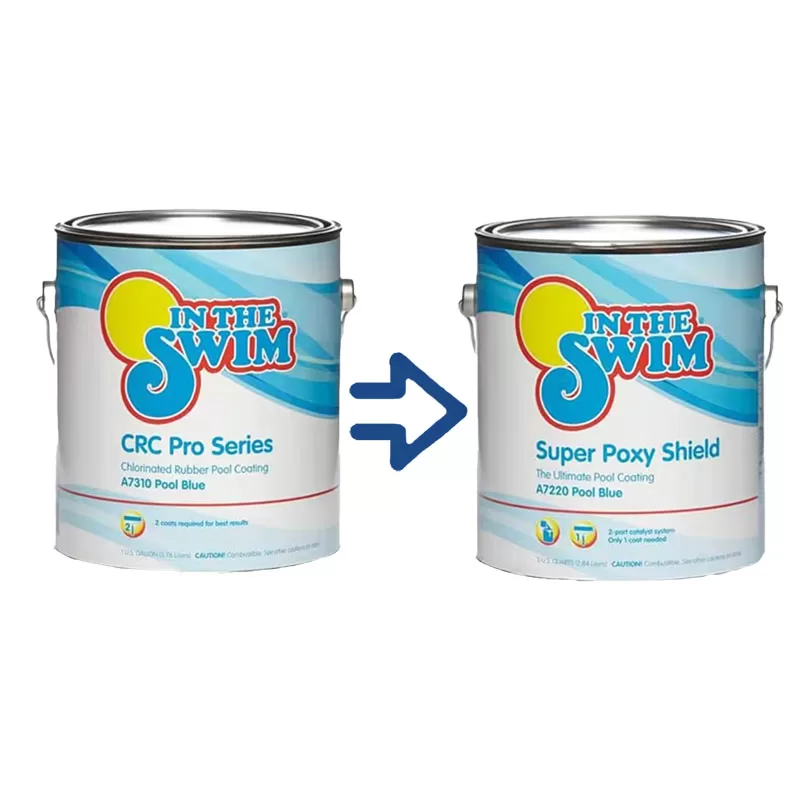FREE Standard Shipping On All Orders $100 or More!*

Swimming Pool Repainting Tips
It is that time of year again, spring has sprung, and it is time to repaint your pool. We are here to help you learn everything you need to know about repainting your pool.
Testing to Determine Pool Paint Type
It's very important to repaint the pool with the same type of paint used before. If the pool was painted with epoxy, repaint with epoxy paint, and if rubber-based paint was used, then go over it again with rubber.
If you are not sure what paint is on the pool, test a paint chip by dissolving in epoxy or rubber based solvents, or use acrylic (see below).
- Use rubber or epoxy pool paint solvents.
- Chip off a small piece of the pool paint.
- Rub the chip in a few ounces of one of the solvents.
- If it starts to dissolve within about a minute in one solvent while rubbing, it is that type of paint. If not, it's the other.
Pool Paint Solvents
A solvent is a liquid that can dissolve other substances. It's not a complete or rapid dissolve but only lightly affects the surface. You're looking for a surface chalking on the paint chip, or for softening and smudgy removal on pool wall test areas.
1. Denatured alcohol dissolves acrylic pool paints
2. Xylene (Xylol) dissolves rubber-based pool paints
3. Butanone (MEK) dissolves epoxy pool paints
Paint Chip Test
Clean the paint chip of any oils or dirt, and drop it into an ounce or two of the solvent for approximately 30 seconds. Observe the chip for surface action, like a cloudy haze or micro bubbles on the surface. Remove with tweezers and wipe with a cotton ball or paper towel to see if the paint will rub off easily.
If the paint gets soft and smudgy, you have found your pool paint type. If it's not soft or obviously dissolving, you can move onto a different solvent, and so on, until you find the one solvent that definitely dissolves the paint. To be certain, perform the test with another chip, to confirm the results.
Wall Paint Test
Clean the wall area to be tested with TSP, Simple Green, or just soap and water, to remove any grease or oils from the surface. When dry, use a cotton ball or paper towel to apply the solvent directly onto the painted surface in a vertical area of about 6-8 inches long and 1 inch wide. Rub the area with an up and down motion, and after half a dozen passes, if you don't feel the paint becoming soft and sticky, move to an untested area and repeat the test with a different solvent type.
Use enough solvent to saturate the cloth, but not so much that it will drip off. When you think you have found your solvent and thus your paint type, repeat the test in another area, just to confirm the results.
Switching from Rubber to Epoxy

In the old days, you had to sandblast the pool to remove every trace of rubber paint, before you could repaint with the longer-lasting epoxy pool finish. Now, you can use Advance Plus conversion paint as a primer, and then paint over with any Epoxy pool paint!
Epoxy pool paint is more expensive than rubber based, but it can last up to 7 years, wearing thin over time. It also produces a hard, ceramic-like finish.
Acrylic enamel is a water-based pool paint, so the surface doesn't need to be completely dry before refilling the pool, which can save days on your pool painting project. Acrylic paints, however, have a shorter lifespan of 2-3 years, compared to 5-7 years for epoxy. It may outlast rubber-based paint, however, which may only last for 1 or 2 seasons.
Now you are ready to paint your pool, make sure to let the coating cure for the recommended amount of time then enjoy your swimming season in your beautifully repainted pool!
Painting a Previously Painted Pool
The pool prep is exactly the same as for a non-painted pool, only it should go a bit faster. Check the label for paint specific instructions, but the general procedure is:
After the pool is dry, according to the label, it's time to repaint your pool! Remove the pool light, clean the pool and pool deck with a blower, broom or wet/dry vac to remove all debris before you start painting, and check the weather forecast for rain or heavy winds. Start in the deep end with a 5-gal bucket and a roller, and apply the new paint. Corners and steps can be cut-in with a small roller or brush.
Allow the pool some dry time, according to label, and then start filling! See our full selection of pool paints and pool painting supplies, and get started!